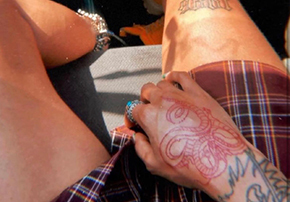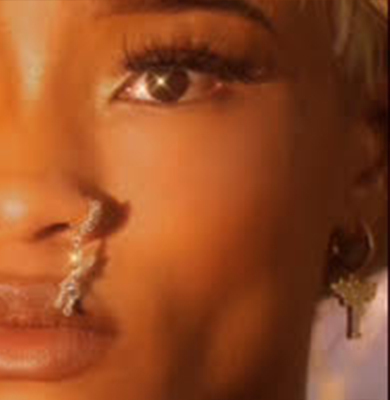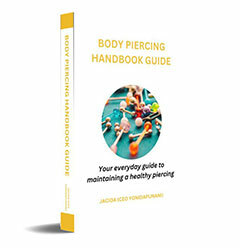Posted by YoniDa’Punani on 11th Oct 2022
11 Essential Things to Consider Before Embarking on Cartilage Piercings
Opting for a body modification that will give you the freedom and style you need will present you with several options, from body piercings to tattoos and cosmetic surgery. With body piercings giving you a better and more stylish pattern to showcase your jewelry, cartilage piercings might just be what you need to curate that cozier style and look.
Since cartilage piercing stays confinedly around the ear and not necessarily on the earlobe, it can be a better way to look super cool than other piercings like septum or nose piercing. Celebrities like Beyoncé and Rihanna opting for cartilage piercings can be an excellent way to identify with your style while showcasing your expensive jewelry.
Although, it has been proven that once you become pierced with one form of piercing or another, your urge for more sets in, ultimately leading to a craving for other prominent options like eyebrow piercing.
And accepting to stick with your cartilage piercing would warrant wanting to know a handful of information and truths about the piercing and its processes, healing time, possible rejection or migration, and more. Read on to discover the 11 essential things to consider before embarking on cartilage piercings.
Are you ready?
If yes, then let's get on number one.
1. Seek Advice
The first stage to getting a successful cartilage piercing is to seek advice from professional piercers and shops. As you may know, there is no way two people will experience the same pain level for a cartilage piercing, so it's essential to get elaborate information to know where to expect changes.
Even if you ask your friends, neighbors, or colleagues who have had a cartilage piercing, a professional will present more refined info since they have first-hand experience with the process, the type of jewelry used for a cartilage piercing, and more. The professional would know if your body anatomy can accommodate titanium, stainless steel, or more sophisticated jewelry.
Other advice or questions you can ask is the earring style the professional intends to use since most cartilage piercings, like the helix, would heal faster with a bar which could be switched to a hoop as soon as it heals.
2. Eat Right
An important aspect worthy of consideration before embarking on cartilage piercing is to eat right. Eating right here means a moderate intake of food, not drinking alcohol or wine, and getting a handful of rest before going for the piercing.
Taking alcohol or wine will delay the healing time, lead to excessive bleeding, and ultimately cause dehydration to your body system. Among others is to get enough rest and sleep a minimum of eight (8) hours a night before going to ensure your body system is calm and relaxed to face the few seconds pinch.
Lastly, ensure you proceed to your piercer shops with enough water and possible Vitamin C-related food content. You can also get a snack while on your way for support.
3. Little or No Pain
Piercings pains vary individually since everyone's pain level differs, but from professionals' experience, they're like the usual lobe piercing. If your pains come a little, you might experience swelling a couple of hours after a piercing.
Cartilage piercings are more or less like the first line of a tattoo, usually a quick pinch. If you notice heavy pain, you can take pain relief pills like ibuprofen, which can also help reduce inflammation.
Since piercing is considered one of the medical procedures, do not take it casually; ensure you follow through with your piercers' recommendations for maximum results.
4. Possible Rejection & Migration
Rejection and migration are two essential things to consider before embarking on cartilage piercings. You might have fallen in love with your new cartilage piercing while your body still sees it as a convenience or a distraction.
This often occurs if there is an infection, incorrect piercing placement, migration, and possible allergies to the type of metal used. Well, this can happen to anyone as cartilage, and nasal piercings have the highest migration and infection rate, ultimately ensuring you get proper care for your new piercing.
If you notice an infection after getting your cartilage piercing, ensure you speak to your piercers while also reaching out to your doctor for a possible remedy. Such action will help check if it's just irritation or a potential infection and possibly check for the causes while also providing you with the solution.
Several defects can be stopped if identified early, like scarring, rejection, infection, and migration are possible defects that can be dealt with if immediate action is taken.
5. It Heals With Time
Cartilage piercing is a different bug game altogether as compared to earlobe piercing. Cartilage piercing healing time might take up to a year, whether your body anatomy fits it or not.
The earlobe generally has more tissue allowing more blood to flow than the cartilage. The best you can do is to take proper care of yourself while keeping other essential criteria intact.
Again, healing time will also vary from person to person due to lifestyle, occupation, and possible hobby. You can always look up the body jewelry safety to curate a perfect healing timing for your cartilage piercing.
6. No Sound if Done With a Properly Sterilized Autoclave Needle
A popular misconception is that you'll hear a crunch sound when you're pierced in your cartilage, but an honest answer is NO. If the professional use a properly sterilized single-use autoclave needle that is sharp enough to give the best results, you will enjoy the swiftness, while the piercer will appreciate the speed in which they carried out the piercings on you.
Such noise may have emanated from indigenous means of piercings, not today's modern piercings tools. While this lasts, you may rob yourself of your best sleeping pattern.
7. You May Rob Yourself of Your Best Sleeping Pattern
If you love to roll while sleeping, this is probably not for you, or you may adjust to ensure you get a hitch-free healing process. Getting a cartilage piercing would ensure you don't sleep sideways since it may temper your new piercing, ultimately prolonging your healing time.
Sleeping sideways may introduce bacteria, excessive swelling, and irritation. A good recommendation to help protect your new cartilage piercing is to put a new clean T-shirt over your pillow during sleep and ensure to replace it nightly to avoid bacteria transfer to your new piercing.
Now that you have a grasp of the prerequisites, you can proceed to locate a professional piercer or shops where you will get your cartilage piercing.
8. Locate a Professional Piercer or Shop
You're set and ready to get your cartilage piercing; you don't want to be handled by an amateur who will barely not know what they're doing. Getting your cartilage piercing from a professional piercer is a one-step-ahead win for you.
Do your due diligence by conducting concise research about the best piercer or shop in your city. Also, check if they use a piercing gun or a needle to know how professional the piercer is.
On the side, needle piercing is best for cartilage piercings and is safer and healthier than piercing guns. However, nearly all piercings shops and outlet uses needle nowadays for quick delivery. And If you find the one that uses piercing guns, do yourself good by finding another.
The body of the piercer's organization, popularly called the Association of Professional Piercers APP, gives some great reasons why piercing guns are unsuitable for cartilage piercing.
Some of the Reasons Are:
- It can cause damage to your body's tissue
- It also poses sanitation concerns since they use it for almost everyone that comes for a piercing.
- Cleaning it is an issue because no matter what you use to clean it, if it doesn't stay up to the required hours for it to dry, it will cause more harm to you.
9. Maintain Hygiene
Now that you have researched the piercers and may have probably gotten pierced, you need to maintain your cartilage piercing after you have done it. Keep good hygiene to avoid contracting trending diseases and bacteria infections.
Your cartilage piercings will require a routine saline solution cleaning which you can buy from any pharmaceutical store in your city. However, to achieve good hygiene, you should clean the area gently and wash each side of your cartilage piercings with saline solution and a cotton ball, pad, or soft cloth twice a day.
Ensure you follow your piercer's instructions while carrying out your daily routine, plus placing your piercing in running water. If you adhere to your piercing guidelines, you should also learn to avoid unnecessary changes to your jewelry.
10. Avoid Unnecessary Jewelry Change
Yes, you're maintaining good hygiene for your piercing to get healed; you also need to avoid unnecessary jewelry changes. You can buy all the jewelry you want, but keep them until your piercings heal completely.
Ensure you don't get stuck with the urge to try out your new jewelry on your piercing so it doesn't get infected, ultimately leading to an improperly healed piercing. If you find yourself with that urge, ensure you talk to someone about it, your piercer is ideally the best and proper person to discuss that with whenever such urges surface.
If you scale through the cartilage piercing, you may begin your scout for trending piercings.
11. Possible Attachment to New Piercing Trends
Since your first piercing is successful and having seen the process, time it takes to heal, and the hygiene routine best care practices, you may get attached to getting a new piercing.
Your eyeballs will start checking through Pinterest and social media for trending piercings, time like this, you should be calm while taking your time to learn more about your next body modification strategies.
Apart from these 11 essential things to know before embarking on your cartilage piercing, the following are other things you should know and care about too.
Other Things to Know Before Opting for a Cartilage Piercing
Types of Cartilage Piercings
There are many types of cartilage piercing depending on your approach, but here are the popular ones to note
Rook: This is located in the upper ear through the antihelix that's the fold beneath the rim
Helix: The helix is the standard and trending style located on the upper outer rim of your ear.
Daith: This is done through the ear's inner fold of cartilage.
Earhead: This is the famous forward helix you hear; it is done in the outer rim of your ear directly above the tragus type.
Tragus: This one goes through the tiny piece of cartilage that hangs in front of the ear canal.
Conch: Conch is divided into two, inner and outer. The Inner is placed through the middle ear and decorated with a stud. The Outer is pierced through the outer part of the ear's cartilage.
Cost of Cartilage Piercings
Depending on the type of cartilage piercing you're opting for, the average cost for a cartilage piercing is between $30 - $120. It depends on the store, the piercers, and the package delivered to you after the piercings.
You are now ready to get your cartilage piercing from a professional; ensure to get all your body jewelry from the yonidapunai collection of jewelry





